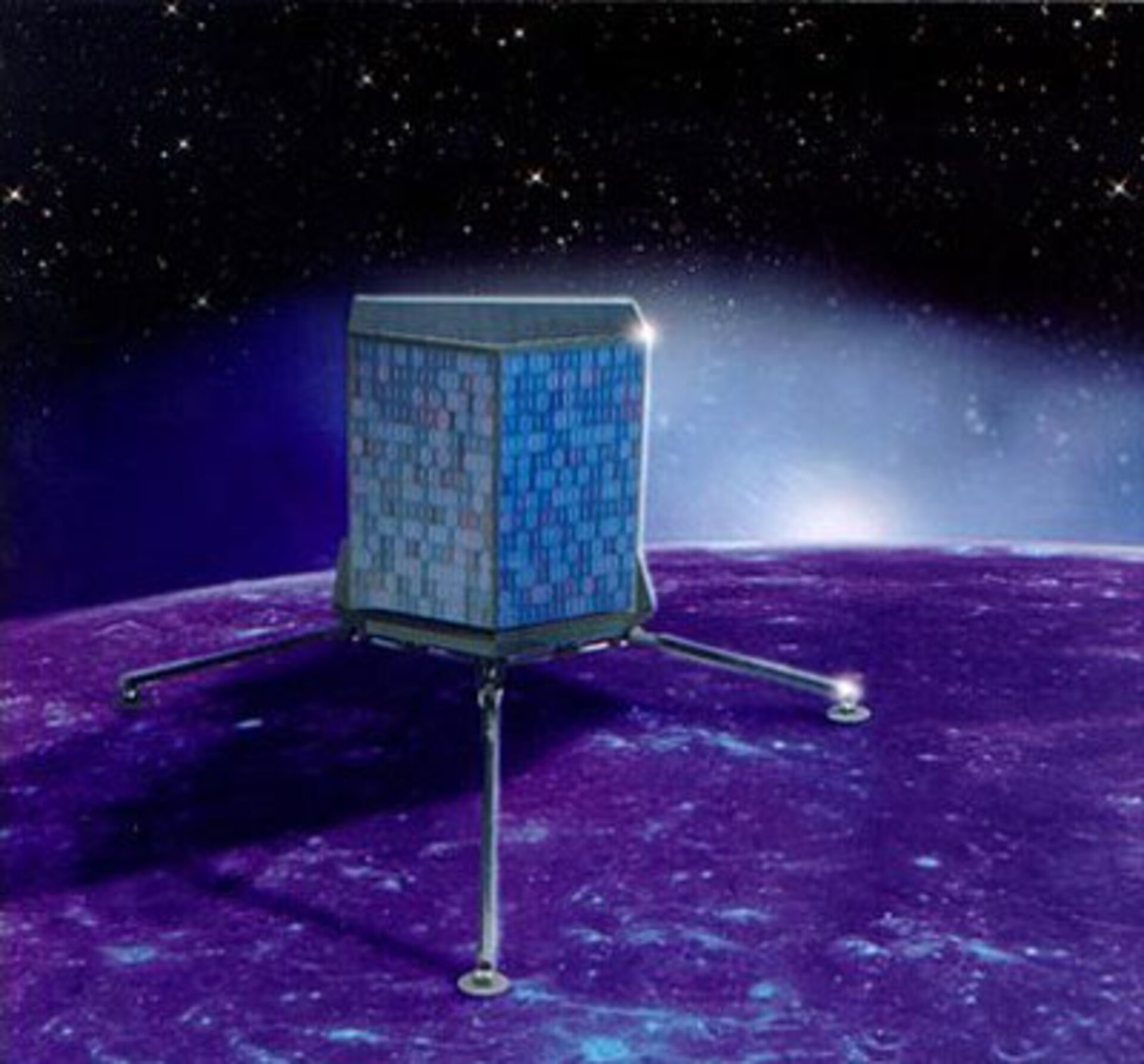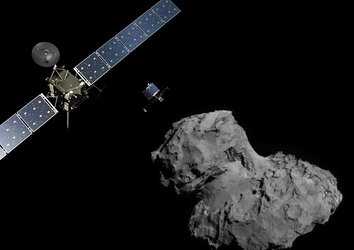Rosetta: A spacecraft of ‘firsts’
Spacecraft are always made with the idea of doing or discovering something new. After all, that’s the nature of scientific enquiry. However, even by the high standards demanded by space exploration, ESA’s comet chaser Rosetta is an extraordinary spacecraft anticipating a string of technological and scientific ‘firsts’.
Rosetta will be the first spacecraft to run entirely on solar power in the farther reaches of the Solar System. To do this it will carry the largest solar panels ever flown into space. Rosetta will venture to an area of space where the light levels are just 4% of those near Earth. Its pair of giant solar panels, each 14 metres in length with a combined light-collecting area of 64 square metres, will extract 400 Watts from the weak sunlight to power the spacecraft.
Rosetta is going this far away so that it can make the first-ever rendezvous with a comet. This is different from the fly-by that ESA’s Giotto mission performed with Comet Halley’s comet in 1986. In a fly-by, the spacecraft briefly crosses paths with another celestial object. In a rendezvous, the spacecraft falls into step with the celestial object. This is very difficult because comets follow such elongated orbits , which is why it was not attempted in 1986.

Having met up with Comet 67P/Churyumov-Gerasimenko, Rosetta can then begin another ‘first’. It will be the first spacecraft to follow the development of a comet from the cold areas around Jupiter’s orbit into the sunlight of the inner Solar System. As the comet nears the Sun, its icy surface will ‘sublimate’ into gas, stripping the comet of perhaps a metre of its outermost layer. Rosetta will watch and measure this process at close range for the first time.
Not only will Rosetta follow Comet Churyumov-Gerasimenko, it will also move into orbit around it – the first time a spacecraft will orbit comet – searching for a suitable site for perhaps Rosetta’s most amazing feat, the first-ever landing on a comet.
Rosetta will eject a lander that will make a controlled descent to the comet’s surface. In fact, because of the comet’s weak gravitational field, it will be more like a docking in space than a landing – so gentle that it has been described as the mission to ‘kiss’ a comet. This has both advantages and disadvantages. Although the lander will not have to fight against the pull of gravity for control, once it is on the surface of the comet it will have to anchor itself with harpoons to prevent it from floating away!
And all this rich harvest before, perhaps, some of the most precious ‘firsts’ of all: the mission’s potential scientific discoveries.







